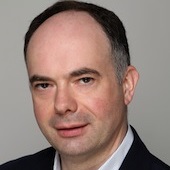Greenspan’s Quandary
Publicly upbeat, privately scared? What drives Mr. Greenspan when it comes to interest rate cuts at the U.S. Federal Reserve?
September 25, 2002
Mr. Greenspan thinks there is a fair chance that the U.S. economic recovery, although slowing, will continue. At the same time, he is privately terrified that it may fizzle.
So the Fed Chairman is hoping for the best. Meanwhile, he is saving every last percentage point of his remaining interest rate ammunition to fight a recession — if one turns up.
This seems a paradox. If Mr. Greenspan is so worried about the U.S. economy, why doesn’t he fire an interest rate cut salvo now — or series of salvos? Why not slash interest rates to zero to insure that a full-blown recession never develops?
In brief, the answer is this: The world may think central bankers are gods. But Alan Greenspan knows that that his powers are limited.
In a free economy, the passions of investors, capitalists and ordinary citizens, if they align, can override the powers of an entire central government — as well as those of a central bank. In other words, things sometimes simply get out of hand, Mr. Greenspan believes.
In such an uncertain world, Mr. Greenspan contends that the psychological timing and relative size of an interest rate cut is far more important than the sheer fact of the cut itself.
In Mr. Greenspan’s view, a quarter or even half point cut in the interest rate now, when the U.S. economy is still expanding, even if only slightly, would have little positive psychological effect on U.S. consumers or business.
As the Fed Chairman sees it, ordinary Americans are not yet frightened enough to pay attention. And U.S. businesses are still so swamped with excess capacity that they are slow to invest now — no matter how low the interest rate.
To understand the magnitude of Mr. Greenspan's problem, consider recent history. He began trimming U.S. interest rates on January 3, 2001, to cushion what he then saw as an impending economic slowdown in the United States.
This pre-emptive strike gave him a head start. It occurred five months before the economic data indicated that a real slowdown was underway.
The federal funds rate stood at 6.5% when Greenspan started to cut rates. And then, he cut, cut and cut again, as the dot.com and telecommunications bubble in the U.S. stock market deflated. Finally, the September 11 terrorist attack on New York's World Trade Center shook not just the United States — but the world. Mr. Greenspan made two final rate cuts to cushion the shock.
His long train of rate reductions halted the U.S. economy’s slide — and launched a recovery in the fourth quarter of 2001. At that point, Mr. Greenspan stopped slashing and crossed his fingers. He had brought the federal funds rate down to 1.75%.
Since that was below the U.S. inflation rate of roughly 2%, the real cost of money — adjusted for inflation — was less than zero. This is an easy money policy by anyone’s definition.
Further, his policies had flooded the U.S. banking system with lendable money. There is 12.7% more cash and instant credit — liquidity — available in the United States today than there was just one year ago.
Mr. Greenspan calculated that this was more than enough money to meet any kind of loan demand. Private investment continued to shrink, however, through the second quarter of 2002.
At this juncture, though, Mr. Greenspan believes that this is because U.S. business still has more capacity than it can use. He expects — and hopes — that this excess capacity is now being absorbed and that investment will actually resume growing during the present quarter.
Even more important than thinking about these supply-demand forces is the need for Mr. Greenspan to hoard his own resources.
As he privately says, “By last October, I had used up 73% of my ammunition. We’d gone from 6.5 to 1.75% on the federal funds rate.”
One wonders: Why should he worry about that? “Because,” responds Mr. Greenspan, “a central bank can cut rates only to zero. After that, the Fed is powerless.”
That is the bottom line. The ultimate risk to central bankers is a depression — which they have no power to attack. Interest rate cuts are their only weapon.
With just 175 basis points left between Mr. Greenspan and zero, he feels forced to let the recovery limp along by itself — as long as it still limps forward.
But when and if the U.S. economy does slip back into recession, Mr. Greenspan believes, a cut of a half point or more could then have an electrifying effect, especially on consumers and the stock market. That is why retaining the ability to make an interest rate move is so important.
Given this reasoning, Mr. Greenspan will continue to avoid any policy change as long as growth remains modest — and the confidence of consumers and business does not fall too much. Should the economy show clear signs of slipping back towards recession, on the other hand, Mr. Greenspan will likely strike hard —and fast.
Read previous
Tony Blair's 1812 Reasons, Plus One
September 24, 2002
